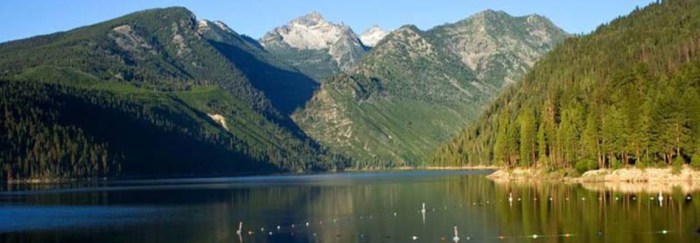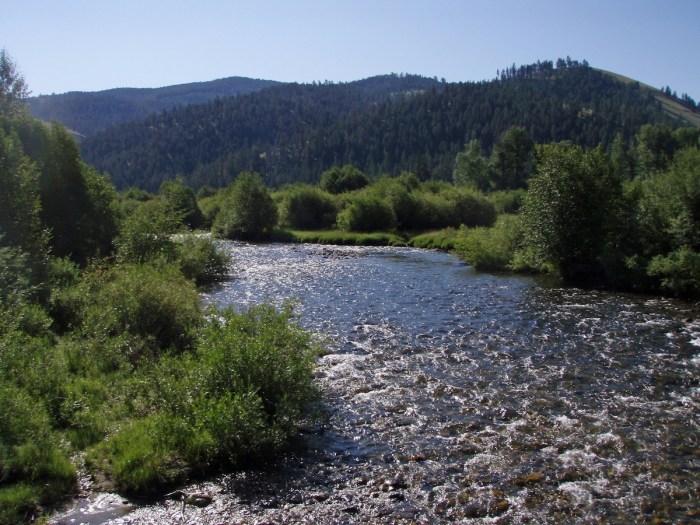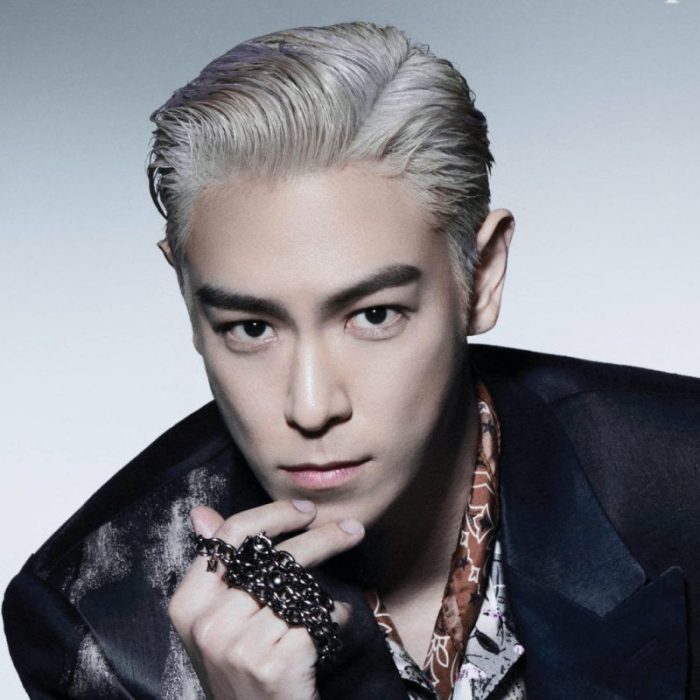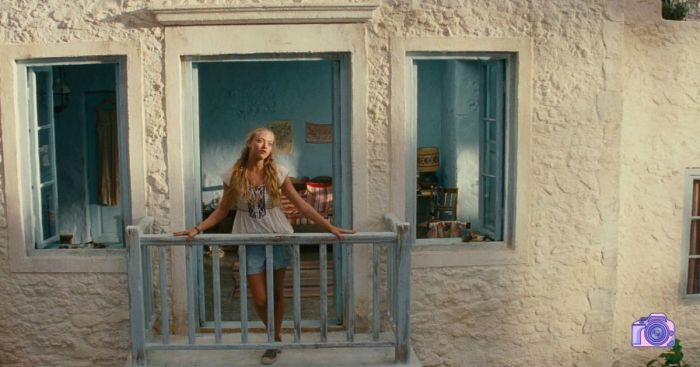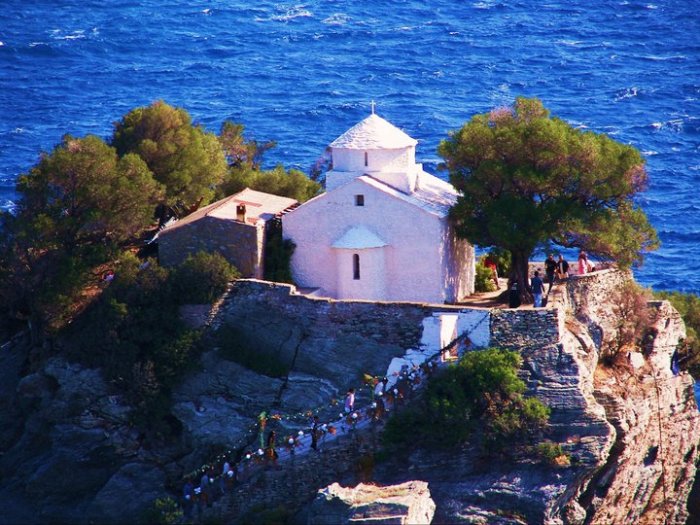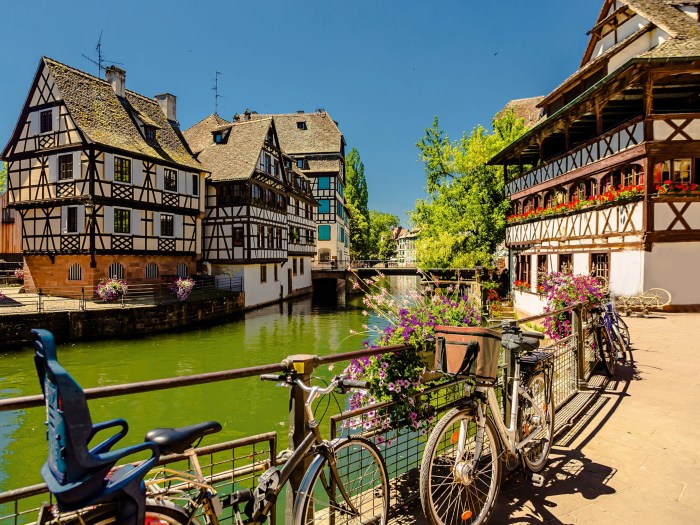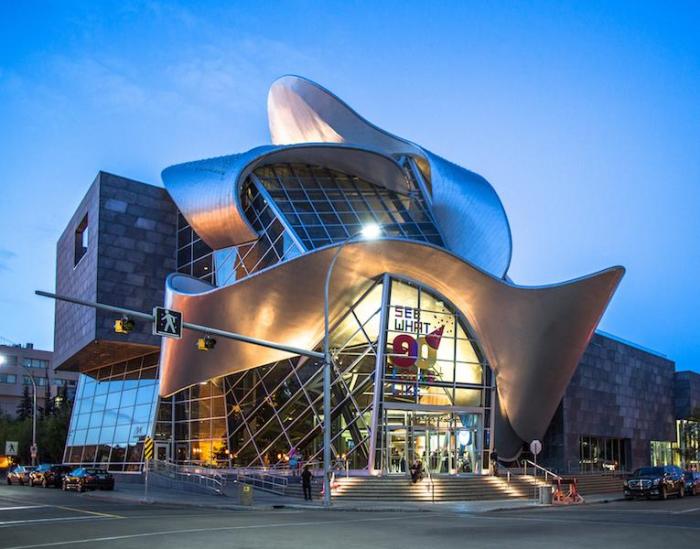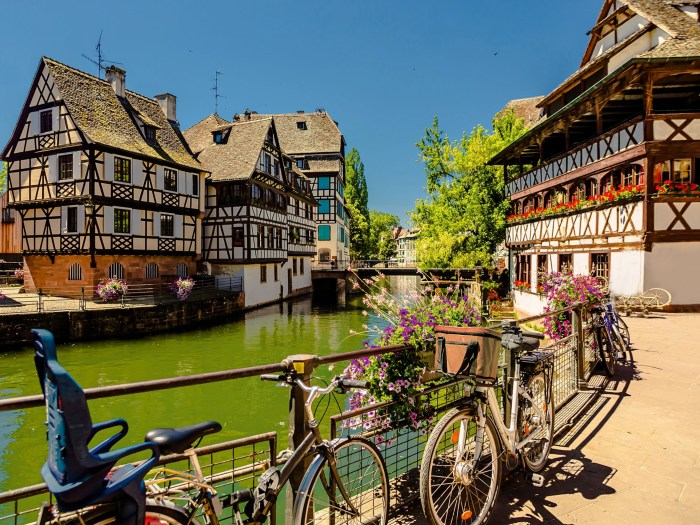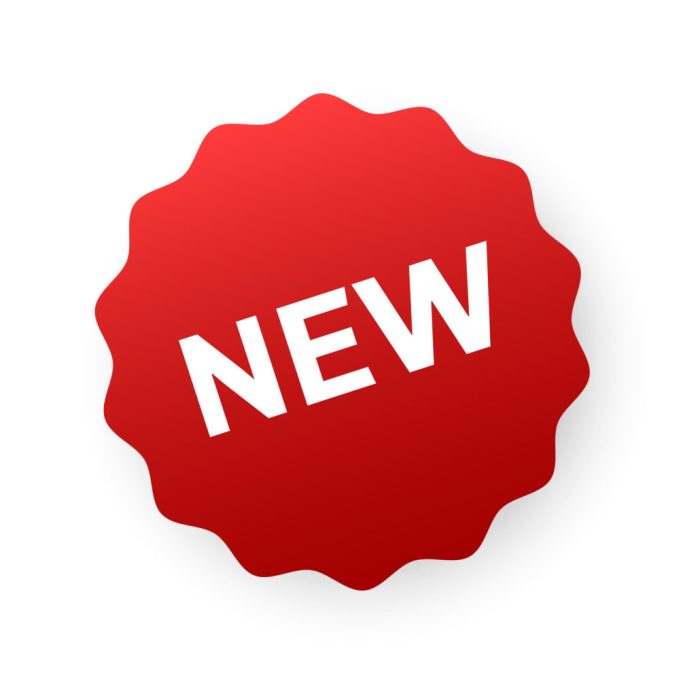Things to know before traveling to Ireland! Planning a trip to the Emerald Isle? This guide covers everything from navigating the visa process and currency to finding the perfect accommodation, getting around, staying healthy, and immersing yourself in the rich culture. Prepare to be enchanted by Ireland’s beauty and charm with our essential tips!
From securing your passport and understanding local currency to discovering the best transportation options and enjoying delicious Irish food, this comprehensive guide will equip you for an unforgettable Irish adventure. We’ll also touch on the healthcare system, cultural norms, and must-see attractions, so you can fully embrace the Irish experience.
Visa and Entry Requirements
Ireland welcomes visitors from around the world, but visa requirements vary depending on your nationality. Understanding these prerequisites is crucial for a smooth and stress-free trip. This section provides a comprehensive overview of visa policies, necessary documents, and potential issues to anticipate.Planning your Irish adventure requires careful attention to visa regulations. Different nationalities face varying levels of visa requirements.
Knowing the specifics ensures a seamless journey and avoids unforeseen delays.
Visa Requirements by Nationality
Visa requirements for Ireland are determined by the nationality of the applicant. Citizens of certain countries are exempt from visa requirements, while others may need a visa to enter the country. The best source for up-to-date information is the Irish government website.
Necessary Documents for Entry
A valid passport is the most fundamental document required for entry into Ireland. It should be valid for at least three months beyond the intended stay. Other essential documents may include travel insurance, confirmed flight or ferry bookings, and proof of sufficient funds to cover your stay.
- Passport: A valid passport, typically with a minimum validity period of three months beyond the intended stay, is mandatory for all travelers. Check specific requirements for your nationality.
- Travel Insurance: Proof of comprehensive travel insurance covering medical expenses, trip cancellations, and emergency situations is recommended. The minimum coverage amount varies depending on your travel duration and activities.
- Proof of Accommodation: Reservations or confirmations of your accommodation arrangements (hotels, hostels, Airbnb, etc.) during your stay. This demonstrates your intended itinerary.
- Proof of Funds: Evidence of sufficient financial resources to cover your trip expenses. This could be bank statements, credit card statements, or letters from sponsors.
Vaccinations and Health Requirements
Certain vaccinations may be required depending on your origin country. Consult your physician or the relevant health authorities for specific recommendations. It is crucial to ensure you meet the necessary health requirements to avoid any potential health issues during your trip.
So, you’re planning a trip to Ireland? Great! Before you pack your bags, it’s worth knowing about the best times to visit for pleasant weather. Also, factor in the potential for unpredictable weather. While you’re researching Ireland, you might also want to check out some fantastic free activities for kids in Barcelona, like the ones listed here: free things to do in barcelona with kids.
This will give you a good idea of what to expect from kid-friendly destinations, which is useful when planning your trip to Ireland, especially if you have young children.
- Health Considerations: Check for any specific health requirements, such as mandatory vaccinations, depending on your country of origin. Your doctor or local health authorities will provide tailored guidance based on your situation.
- Medical Advice: Seek personalized advice from your healthcare provider regarding any necessary vaccinations or health precautions for your travel plans. This tailored advice will be crucial for a safe and healthy trip.
Visa Application Procedures
The visa application process can vary depending on your nationality and the purpose of your visit. Applying in advance is highly recommended to avoid any delays. The process typically involves completing an application form, providing supporting documents, and paying the application fee.
- Application Process: The application process involves completing the application form, submitting supporting documents, and paying the required fee. The specific requirements vary based on the applicant’s nationality and the purpose of the visit.
- Application Deadline: Ensure you apply well in advance of your travel date to avoid potential delays in processing your visa application. Allow ample time for processing.
Common Visa-Related Issues
Travelers may encounter issues such as incomplete application forms, missing documents, or insufficient funds. Thorough preparation and careful review of requirements will mitigate these risks. Applying well in advance allows time to address any issues.
- Incomplete Documents: Ensure all required documents are meticulously prepared and submitted correctly. A thorough checklist will aid in this process.
- Application Delays: Apply for your visa well in advance of your travel dates to avoid potential delays in the visa processing time. Allow sufficient time for processing.
Currency and Finances
Ireland uses the Euro (€) as its currency. This simplifies transactions for travelers accustomed to the Eurozone, eliminating the need for currency exchange at borders. Navigating the financial landscape of your trip is crucial for a smooth experience. Knowing the payment options available and managing your budget effectively will ensure a worry-free adventure.The Euro’s stability makes it a reliable currency for international travel, and Ireland’s robust financial infrastructure supports seamless transactions.
This section will provide crucial information on managing your finances effectively, from currency conversion to payment methods.
Euro Currency
The Euro (€) is the official currency of Ireland, as well as many other European countries. This unified currency simplifies transactions and makes budgeting easier for travelers. Understanding the exchange rates and the conversion methods available is key.
Exchange Rates and Currency Conversion
Exchange rates fluctuate constantly. Checking current rates before your trip and using online converters can help you estimate costs. Many banks and exchange bureaus offer currency exchange services, often with varying fees. Utilizing a credit or debit card for transactions can often avoid these fees.
Payment Options
Ireland’s payment infrastructure is quite robust. Credit cards are widely accepted in most establishments, from restaurants to shops. Debit cards also work effectively for withdrawals and purchases. Cash remains a viable option, but its use is decreasing, especially in tourist areas.
- Credit cards offer a convenient way to pay for purchases, and many establishments accept various types, like Visa and Mastercard.
- Debit cards can be used for withdrawals from ATMs, making cash readily available throughout your trip.
- Cash is still accepted in many locations, but credit and debit cards are becoming more prevalent.
ATM Availability and Fees, Things to know before traveling to ireland
ATMs are widely available in Ireland, providing a reliable source for cash withdrawals. However, be aware of potential fees charged by your bank or the ATM provider for international transactions. It’s wise to inform your bank of your travel plans to avoid potential issues with your card.
- ATMs are abundant in cities and towns, making cash readily accessible.
- Always check with your bank about international transaction fees, as they can vary.
- Planning ahead and knowing the potential fees will help you manage your finances efficiently.
Managing Finances During Your Trip
A crucial aspect of any trip is managing your finances effectively. Creating a budget before you go can help you track spending and avoid overspending.
- Set a daily or weekly spending limit to avoid unexpected expenses and stay within your budget.
- Track your expenses meticulously to understand your spending patterns and identify areas where you can save money.
- Estimate the costs of activities and accommodation to avoid unpleasant surprises during your trip.
Using a Travel Card or Debit Card Abroad
Using a travel card or debit card abroad is generally straightforward. However, it’s essential to notify your bank or card provider about your travel plans to prevent any issues with your card being blocked due to unusual activity. Be sure to understand the terms and conditions of your card for international transactions.
- Confirm your card’s acceptance for international transactions with your bank.
- Check for any transaction limits or fees associated with international usage.
- Informing your bank about your travel plans helps prevent potential issues.
Accommodation Options
Ireland offers a diverse range of accommodation options to suit various budgets and preferences. From cozy guesthouses to luxurious hotels, finding the perfect place to rest your head is easily achievable. Understanding the different types and their associated costs is key to planning a smooth and enjoyable trip. Consider your priorities – convenience, budget, and social interaction – when making your choice.
Accommodation Types Comparison
Different accommodation types cater to distinct needs and preferences. Hotels provide a high level of convenience and amenities, while guesthouses offer a more local experience at often more affordable rates. Hostels are excellent for budget travelers seeking a social atmosphere. Airbnb rentals provide unique experiences and often more privacy, though the quality of these can vary. Analyzing the pros and cons of each type will help you select the ideal option for your trip.
Hotel Accommodation
Hotels provide a high level of convenience, typically with amenities such as restaurants, swimming pools, and business centers. They are generally a good choice for those prioritizing ease and a variety of facilities. However, hotels often come with a higher price tag. Business travelers and tourists seeking a complete and comfortable experience frequently choose hotels.
Planning a trip to Ireland? Be sure to check out visa requirements and currency exchange rates beforehand. Plus, knowing about the new partnership between Delta Air Lines and El Al Israel Airlines, which could impact flight options , is always a smart move. Ultimately, a little research goes a long way when preparing for your Irish adventure!
Guesthouse Accommodation
Guesthouses are often a more affordable alternative to hotels, offering a more local experience. They often have a more intimate atmosphere, allowing for greater interaction with the community. While amenities might be less extensive than in a hotel, guesthouses often provide a welcoming and personal touch. They can be a great option for budget-conscious travelers wanting a taste of local culture.
Hostel Accommodation
Hostels are a popular choice for budget-conscious travelers, offering a social environment with dorm-style rooms. This provides opportunities to meet fellow travelers and experience a lively atmosphere. Hostels usually have basic amenities, which might not be suitable for everyone. They are a cost-effective choice for those prioritizing social interaction and a vibrant travel experience.
Airbnb Accommodation
Airbnb rentals provide a unique experience, offering the opportunity to stay in homes or apartments, often in more local neighborhoods. This gives you a greater sense of privacy and independence, unlike hotels or hostels. However, the quality of Airbnb accommodations can vary significantly, and guests must be mindful of the potential discrepancies. This accommodation type offers a personal touch and a more home-like experience, potentially at a competitive price point.
Accommodation Cost Comparison
The cost of accommodation in Ireland can vary greatly depending on the location and type of accommodation. Urban centers often have higher prices, especially during peak seasons. Rural areas typically offer more affordable options. The following table provides an estimated average cost range for different accommodation types:
| Accommodation Type | Pros | Cons | Estimated Cost (avg.) |
|---|---|---|---|
| Hotel | Convenience, amenities | Can be expensive | €100 – €300+ |
| Guesthouse | Local experience, often cheaper | Less amenities than a hotel | €50 – €150+ |
| Hostel | Budget-friendly, social | Basic amenities | €20 – €80+ |
| Airbnb | Unique experience, privacy | Varying quality | €50 – €200+ |
Finding Suitable Accommodation
Numerous online resources can help you find suitable accommodation in Ireland. Booking.com, Expedia, and Airbnb are popular platforms. Local travel websites and forums can also provide insights and recommendations. Using filters based on your budget, location preferences, and desired amenities will narrow down your choices and make the process more efficient. Thorough research is essential to securing the best value for your money.
Transportation
Getting around Ireland is a breeze, offering a diverse range of options to suit every traveler’s needs and budget. From hopping on a scenic train to navigating bustling city streets by bus, or perhaps renting a car for exploring the countryside, Ireland’s transportation system is well-connected and efficient. Understanding the different methods and their associated costs will help you plan your journey effectively.Exploring Ireland’s beauty requires careful consideration of transportation choices.
Choosing the right mode of transport depends on factors like your budget, travel style, and the specific areas you wish to visit.
Public Transportation Options
Public transportation in Ireland is extensive and reliable, making it a convenient option for exploring the country. Buses are the most prevalent form of public transport, connecting towns and cities across the nation. Train services provide a more comfortable and scenic alternative, especially for longer journeys between larger cities.
- Buses: Bus services are widespread, offering connections to most towns and cities. Companies like Bus Éireann and local operators provide extensive routes. Expect fares to vary depending on the distance and type of ticket purchased. Real-world examples of bus fares range from €5 to €20 for longer journeys. Bus schedules are generally well-publicized, allowing for efficient travel planning through various online resources and apps.
- Trains: Ireland’s rail network provides a scenic and comfortable way to travel between major cities and towns. Services are operated by Iarnród Éireann. Train fares vary significantly depending on the distance and type of ticket. Consider purchasing a rail pass if you plan on extensive train travel for better cost savings. For example, a one-way ticket from Dublin to Galway can cost approximately €20 to €50, while a rail pass for a week could potentially cost €80 to €150, offering substantial savings.
Navigating Public Transportation
Utilizing public transport in Ireland is straightforward. Many bus and train stations feature clear signage, and you can easily obtain route information and schedules at the stations or through online resources. Apps dedicated to public transport in Ireland are readily available for convenient real-time updates.
Car Rental
Renting a car provides flexibility for exploring Ireland’s scenic countryside and smaller towns. Companies like Enterprise, Hertz, and Europcar offer car rental services at various locations across the country.
- Rental Process: To rent a car, you typically need a valid driver’s license, passport, and a credit card. The exact requirements may vary between rental companies. Be sure to confirm the specific documents required in advance. Ensure that your driver’s license is internationally valid and has not expired.
- Rental Costs: Car rental costs vary depending on the type of vehicle, rental duration, and time of year. Expect daily rental fees to range from €30 to €80, with additional costs for insurance and fuel. Prices fluctuate depending on the time of year and demand. Research different rental companies for better deals.
- Driving in Ireland: Driving in Ireland is generally straightforward. The roads are well-maintained, and the speed limits are clearly marked. However, be mindful of potential road conditions, especially in rural areas, as they can vary.
Choosing the Best Transportation Method
Consider your budget, travel style, and itinerary when deciding on the best transportation option. For short trips within cities, buses and taxis are often the most cost-effective choices. For longer journeys or rural exploration, renting a car offers the most flexibility. Train travel provides a scenic and comfortable option for journeys between major cities.
Health and Safety: Things To Know Before Traveling To Ireland
Ireland offers a welcoming and generally safe environment for travelers. However, being prepared for potential health concerns and understanding local emergency procedures can enhance your trip. This section provides crucial information to ensure a smooth and safe experience.The Irish healthcare system is well-regarded, but knowing how to access it effectively is important. This includes understanding your travel insurance coverage and the potential costs involved.
Healthcare System and Access
Ireland has a universal healthcare system, primarily funded by taxes. This system, however, is not designed to cover all expenses, especially for pre-existing conditions. For visitors, it’s highly recommended to have comprehensive travel insurance. This insurance will cover medical expenses, including emergency treatments, hospital stays, and repatriation if necessary. Always check the specifics of your travel insurance policy to ensure it aligns with your needs and the coverage you require.
Make sure your insurance company is aware of your travel dates and destination.
Recommended Vaccinations and Health Precautions
Ireland generally has a good level of public health. However, certain vaccinations may be recommended based on your health history, the time of year you’re visiting, and your personal risk factors. Consult your doctor well in advance of your trip to discuss the necessary vaccinations. Ensure that all required vaccinations are up to date. Consider the potential for insect-borne illnesses or other diseases based on the region and time of year you plan to visit.
Proper precautions, like using insect repellent, can help reduce the risk of such diseases.
Planning a trip to Ireland? Knowing the best time to visit is key, but for a truly unforgettable adventure, consider the incredible hike to Choquequirao Peru. Hike to Choquequirao Peru offers stunning views and a unique cultural experience. Pack layers, as Irish weather can change quickly, just as the challenging trails of Choquequirao can be demanding! Be sure to research visa requirements and book accommodations well in advance.
Emergency Procedures and Local Emergency Contacts
Knowing the emergency procedures and contacts in Ireland is vital. In case of an emergency, dial 999 for immediate assistance. This number connects you to the emergency services, which include the ambulance service, fire brigade, and police. For non-emergency situations, consider using 112, which is a European emergency number that can be used to contact the appropriate emergency services.
Keep emergency contact information readily available.
Potential Safety Concerns and Mitigation
While Ireland is generally a safe country, some precautions are always helpful. Be mindful of your surroundings, especially in crowded areas. Avoid walking alone at night in poorly lit areas. Be cautious when using public transportation. If you are traveling with valuable items, consider taking appropriate security measures.
Report any suspicious activities to the authorities immediately. Awareness of your surroundings and taking precautions are key to mitigating potential safety concerns.
Local Emergency Services Contact Numbers
- Emergency Services: 999
- European Emergency Number: 112
Communication
Staying connected is crucial for any trip, and Ireland is no exception. From navigating public transport to coordinating with friends, seamless communication ensures a smooth and enjoyable experience. This section details the various communication methods available, cost considerations, and how to stay connected throughout your travels.Staying in touch with loved ones and accessing information is easy in Ireland.
Mobile phone coverage is widespread, and internet access is readily available in most areas. Understanding the options and costs beforehand helps you plan your budget effectively.
Common Communication Methods
Ireland boasts excellent mobile phone coverage, making it easy to stay connected with friends and family. Local SIM cards provide convenient and cost-effective options. Public Wi-Fi hotspots are also plentiful in cafes, restaurants, and tourist locations, allowing for online access. International calls can be made via apps or traditional phone lines, though local calls are typically cheaper.
Costs of Mobile Data and Local Calls
Mobile data plans in Ireland vary widely depending on the provider and the amount of data included. Prepaid plans offer flexibility, allowing you to adjust your data usage based on your needs. Local calls are generally inexpensive, particularly when compared to international calls. Pre-purchase data bundles or look into local SIM cards for the most affordable options.
Check with your provider about international roaming charges, as they can significantly impact your overall costs.
Recommendations for Local SIM Cards
Numerous mobile providers offer local SIM cards, making it easy to find a plan that fits your needs and budget. Some popular options include Vodafone, Three, and Meteor. These providers often offer introductory discounts or bundle deals for tourists, potentially saving you money. Research specific plans and compare prices to find the best value. Consider factors like data allowance, call minutes, and text messages when selecting a plan.
Staying Connected While Traveling
To maintain a smooth communication flow, pre-planning is essential. Ensure your phone is unlocked and compatible with Irish networks. Purchase a local SIM card upon arrival or order one in advance. Explore the availability of public Wi-Fi hotspots in your planned destinations. Knowing how to access these hotspots will help you stay connected when traveling.
Internet Access in Various Locations
Internet access is widespread in Ireland, particularly in urban areas and tourist hubs. Cafes, hotels, and tourist attractions often provide Wi-Fi access. Check in advance with accommodation providers about their internet offerings. Train stations and airports usually have reliable Wi-Fi as well. Understanding the availability of internet access in different locations helps you plan your itinerary.
Culture and Etiquette

Ireland boasts a rich tapestry of culture and tradition, woven from centuries of history and a unique sense of community. Stepping into Irish society requires a willingness to embrace these customs, and a respectful approach will ensure a warm and welcoming experience. Understanding the nuances of Irish etiquette will allow you to fully immerse yourself in the local culture.Irish culture is deeply rooted in its history and traditions.
From the warmth of its people to the vibrant music that echoes through the land, Ireland offers a unique and captivating experience. Respect for these traditions is paramount, and a mindful approach will enhance your interactions with locals and foster a deeper appreciation for the country.
Irish Hospitality
Irish hospitality is legendary. The Irish are renowned for their warmth and welcoming nature. This is evident in their eagerness to share stories, their willingness to help newcomers, and their generous spirit. Expect to be greeted with a smile and a friendly conversation.
Common Irish Customs
- Greeting customs: A simple “hello” or “hello there” is usually sufficient. Shaking hands is common when meeting someone for the first time, especially in formal settings. Informal greetings, such as a friendly nod or a simple “hello,” are also common.
- Dining etiquette: When dining in a restaurant, it’s customary to order your meal and drinks first. A tip of 10-15% is expected in restaurants. When invited to someone’s home, it’s common to bring a small gift or a bottle of wine, especially for a dinner party.
- Gift-giving etiquette: Gifts are appreciated but not expected. If you do choose to bring a gift, something homemade or locally sourced is often well-received. Practical gifts, such as a bottle of Irish whiskey or a piece of Irish craftwork, are also popular.
Respecting Local Traditions
Respecting local traditions is crucial to a positive experience. This involves understanding the significance of holidays and events, such as St. Patrick’s Day, and showing consideration for local customs. For example, during St. Patrick’s Day celebrations, wearing green and joining the festivities are common expressions of respect for the holiday.
Social Customs and Expectations
Irish social customs often prioritize community and shared experiences. Be prepared for open conversations and discussions. Small talk is common, and a genuine interest in the other person’s life will be appreciated. Directness is sometimes valued over indirectness. Personal space is generally not a significant consideration in Irish interactions, so being close to people during conversation is considered normal.
Avoid overly loud or boisterous behavior, particularly in quieter settings.
Food and Drink

Ireland boasts a rich culinary tradition, blending hearty, home-cooked fare with globally-inspired flavours. From traditional pub fare to Michelin-starred restaurants, there’s something for every palate and budget. This section will explore the diverse food scene, highlighting popular dishes, where to find them, and the options for international cuisine.Ireland’s food culture is deeply intertwined with its history and agricultural heritage.
The availability of fresh, locally sourced ingredients is a significant factor in the country’s culinary landscape. This is evident in the emphasis on seasonal produce and the variety of traditional dishes.
Popular Irish Dishes
Traditional Irish cuisine is characterized by hearty meals, often featuring potatoes, beef, and lamb. Some of the most well-known dishes include:
- Irish Stew: A flavorful stew featuring beef, vegetables (like carrots, potatoes, and onions), and often a touch of Guinness. This comforting dish is a staple in Irish homes and pubs.
- Colcannon: A mashed potato dish typically seasoned with kale, spring onions, and sometimes cheese. It is a very popular side dish, and often eaten as a main course.
- Soda Bread: A quick bread made with baking soda, flour, and buttermilk. It’s a versatile dish, often enjoyed with butter or jam.
- Boxty: A potato pancake, typically made with grated potatoes, flour, and sometimes other ingredients like onions or cheese. It can be eaten as a side dish or a main course.
Where to Find Traditional Irish Food
Traditional Irish fare is easily accessible throughout the country, from bustling city centres to charming rural pubs. The experience is enhanced by the atmosphere and local interactions.
- Pubs: Many traditional Irish pubs serve hearty meals, often with live music and a convivial atmosphere. These pubs are excellent places to experience the local culture while enjoying traditional Irish dishes.
- Traditional Restaurants: Restaurants specializing in Irish cuisine provide an opportunity to savour the authentic taste of Ireland. These restaurants typically offer a wide selection of traditional Irish dishes and local ingredients.
- Farmers’ Markets: Local farmers’ markets are an excellent way to experience the freshest local produce and sample local culinary traditions. They often feature food stalls selling freshly prepared dishes and ingredients.
International Cuisine Availability
Ireland’s culinary scene is not limited to traditional Irish fare. International cuisine is readily available in most major cities and towns.
- Variety: From Italian pasta dishes to Indian curries, and Asian stir-fries, you can find a wide variety of international cuisines.
- Diversity: The diversity of international cuisine options reflects the multicultural nature of Ireland’s population and tourism industry.
Restaurants and Cafes with Different Cuisines
A variety of restaurants and cafes offer a range of international cuisines. The best options will depend on your location and preferences.
| Cuisine | Restaurant/Cafe Examples (Illustrative) |
|---|---|
| Italian | Ciao Italia, Trattoria Da Marco |
| Indian | The Spice Route, Bombay Curry |
| Asian | Sushi House, Thai Delight |
| American | The American Diner, The Burger Joint |
Sample Itinerary with Meal Options
This sample itinerary provides meal suggestions for a potential 5-day trip to Ireland, focusing on a mix of traditional and international cuisine:
| Day | Location | Morning | Lunch | Evening |
|---|---|---|---|---|
| 1 | Dublin | Breakfast at a local cafe | Traditional Irish stew at a pub | Indian curry at The Spice Route |
| 2 | Galway | Breakfast at a B&B | Seafood chowder at a restaurant | Irish pub fare with live music |
| 3 | Killarney | Continental breakfast | Traditional Irish breakfast at a local cafe | Pizza at a pizzeria |
| 4 | Cork | Breakfast at a hotel | International buffet at a hotel | Thai food at a Thai restaurant |
| 5 | Dublin | Breakfast at a cafe | Bagels and coffee at a local cafe | Farewell dinner at a Michelin-starred restaurant |
Activities and Attractions
Ireland boasts a rich tapestry of experiences, from breathtaking landscapes to vibrant cityscapes. Exploring its historical sites, engaging in outdoor adventures, and immersing yourself in local culture are just a few ways to create unforgettable memories. This section details some popular attractions, activities, and unique experiences to help you plan your Irish adventure.Ireland’s diverse attractions cater to a wide range of interests.
Whether you’re a history buff, an outdoor enthusiast, or a foodie, you’ll find something to captivate you. From the ancient castles to the rolling green hills, Ireland offers a unique blend of history, nature, and culture.
Popular Tourist Attractions
Ireland is renowned for its historical landmarks, natural wonders, and charming towns. A visit to Ireland wouldn’t be complete without experiencing some of its iconic destinations.
- Giant’s Causeway: This UNESCO World Heritage site features thousands of basalt columns formed by volcanic activity. The unique hexagonal shapes create a mesmerizing sight, perfect for capturing stunning photographs. The surrounding landscape is equally picturesque, offering opportunities for hiking and exploring the coastal paths.
- Blarney Castle: Known for its famous Blarney Stone, this castle offers a glimpse into Ireland’s medieval past. Kissing the stone is a tradition said to bestow the gift of eloquence. The castle grounds also include a beautiful gardens and park.
- Cliffs of Moher: Standing tall along the Atlantic coast, these dramatic cliffs offer breathtaking views of the vast ocean. The sheer drop-offs and powerful waves create a dramatic spectacle, making it a must-see for any visitor.
Activities to Participate In
Ireland offers a plethora of activities, from guided tours to independent explorations. These activities enrich your experience and provide deeper insights into the country’s history and culture.
- Guided Tours: Many companies offer guided tours of various historical sites, like castles, historic cities, and even scenic drives. These tours often include knowledgeable guides who share historical context and insights, enhancing your understanding of the locations.
- Excursions: Day trips and excursions are excellent options for exploring different regions. These can include visits to nearby towns, villages, or natural landmarks, offering a comprehensive experience beyond major attractions.
Popular Outdoor Activities
Ireland’s stunning natural landscapes provide numerous opportunities for outdoor enthusiasts. Hiking, kayaking, and fishing are popular choices, among others.
- Hiking: The Wicklow Mountains National Park and the Connemara National Park offer challenging and rewarding hiking trails for all skill levels. Enjoy breathtaking views of Ireland’s dramatic landscapes.
- Kayaking: The Irish coastline provides numerous options for kayaking. Explore sheltered bays, discover hidden coves, and encounter wildlife along the way. The experience is invigorating and rewarding.
- Fishing: Ireland’s rivers and lakes offer excellent fishing opportunities. Enjoy the tranquility of nature while pursuing this rewarding activity.
Unique Experiences in Ireland
Ireland offers unique experiences that go beyond the typical tourist attractions. These experiences immerse you in local culture and traditions.
- Attend a traditional Irish music session: Experience the warmth and passion of Irish music and dance in a local pub or venue. This is a great opportunity to connect with the local culture.
- Visit a local farm or distillery: Learn about the production of traditional Irish foods and drinks, such as whiskey or cheese. Many farms offer tours and tastings, allowing you to gain a deeper appreciation for Irish craftsmanship.
- Take a scenic train journey: Explore the picturesque countryside in Ireland by train. Many scenic routes offer stunning views of rolling hills, vibrant villages, and historical landmarks.
Activity Options for Various Interests
Tailor your Irish adventure to your specific interests. This section offers a variety of options for different preferences.
- History Buffs: Visit historical sites, explore castles, and museums to delve into Ireland’s rich past.
- Outdoor Enthusiasts: Embark on hiking trails, kayaking adventures, or fishing expeditions. Enjoy the beauty of Ireland’s nature.
- Foodies: Explore local markets, enjoy traditional Irish cuisine, and take food tours to discover the diverse culinary scene.
Outcome Summary
Embarking on a trip to Ireland requires careful preparation, and this guide provides a roadmap to ensure a smooth and enjoyable journey. We’ve covered crucial aspects like visas, finances, accommodation, transportation, health, communication, culture, food, and activities. Armed with this knowledge, you’ll be well-prepared to fully experience the magic of Ireland.
Whether you’re seeking a bustling city break or a peaceful countryside retreat, this guide provides the necessary insights to make your Irish adventure a memorable one.





